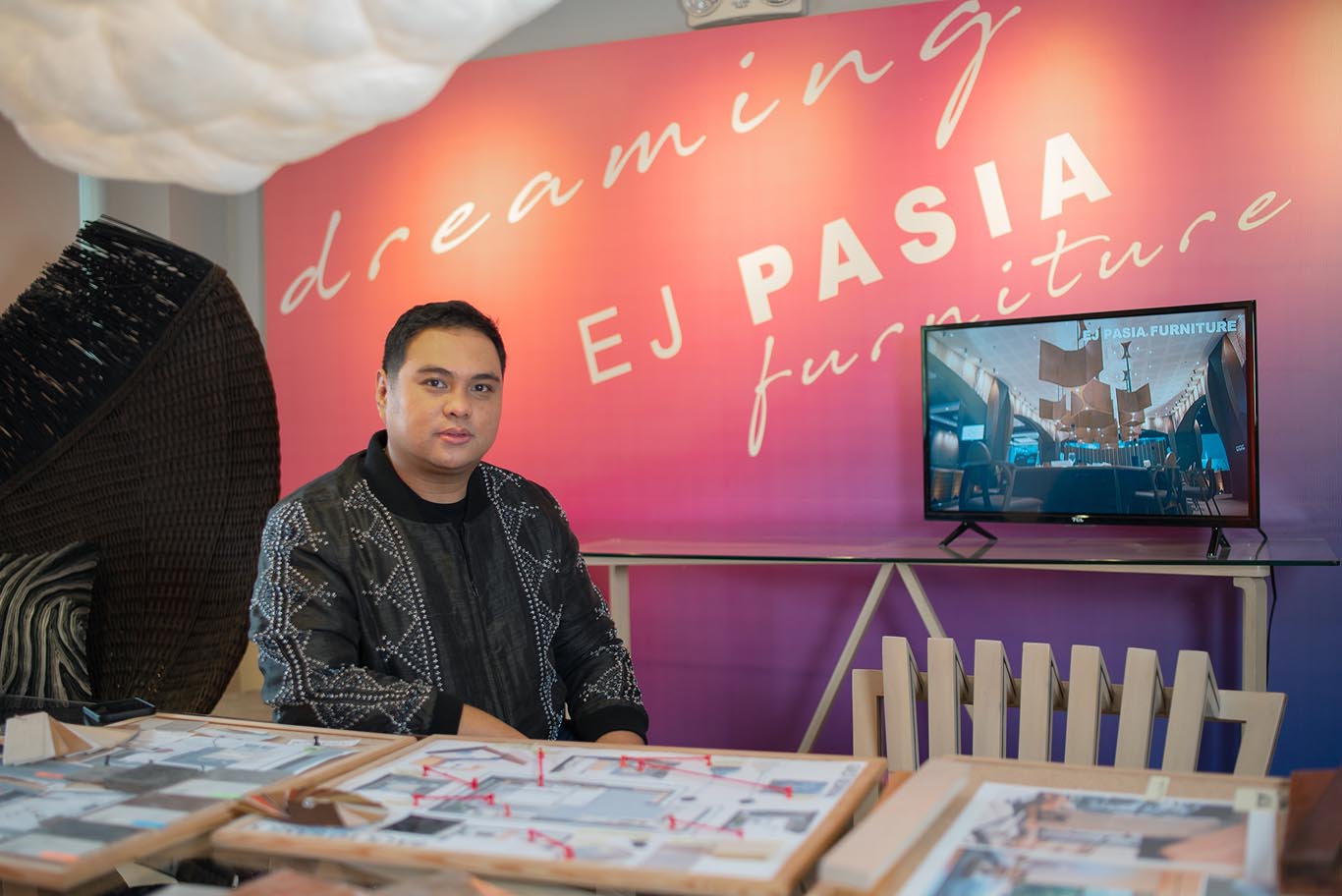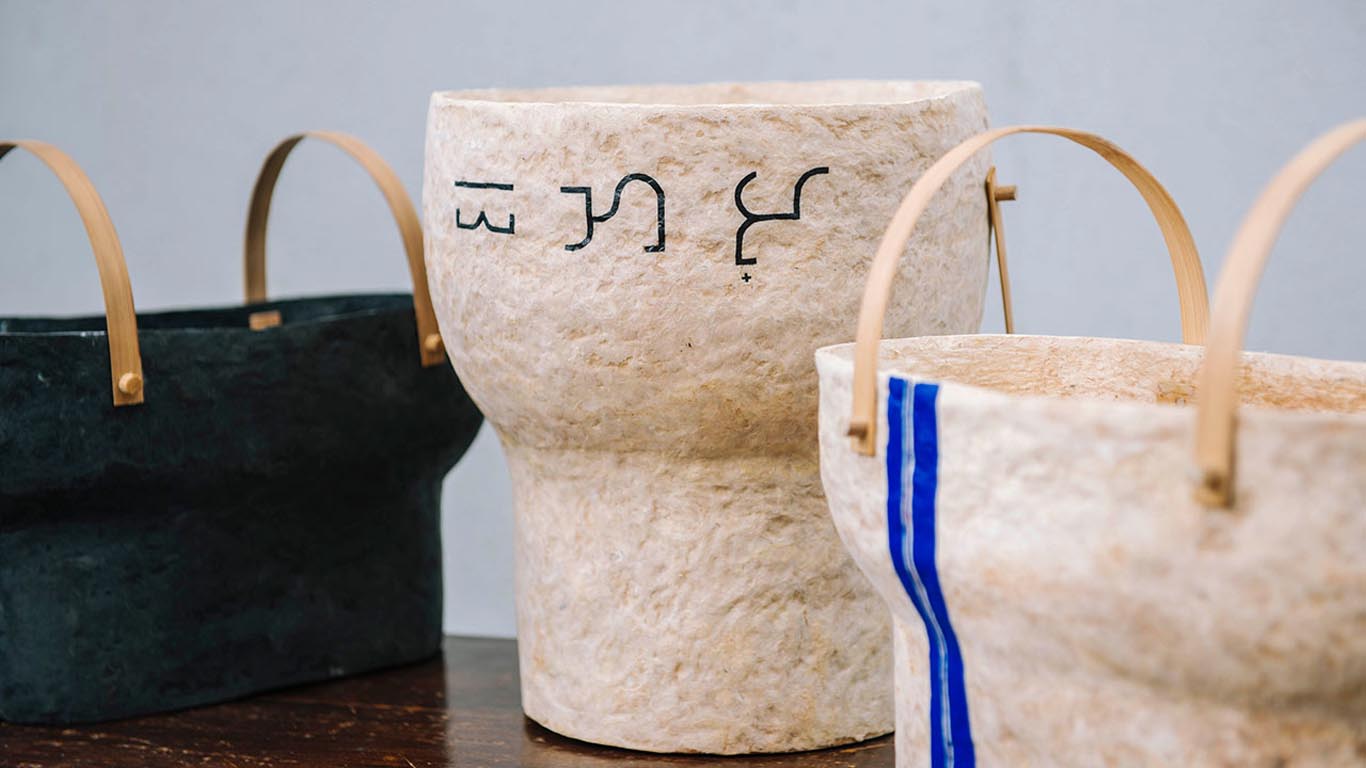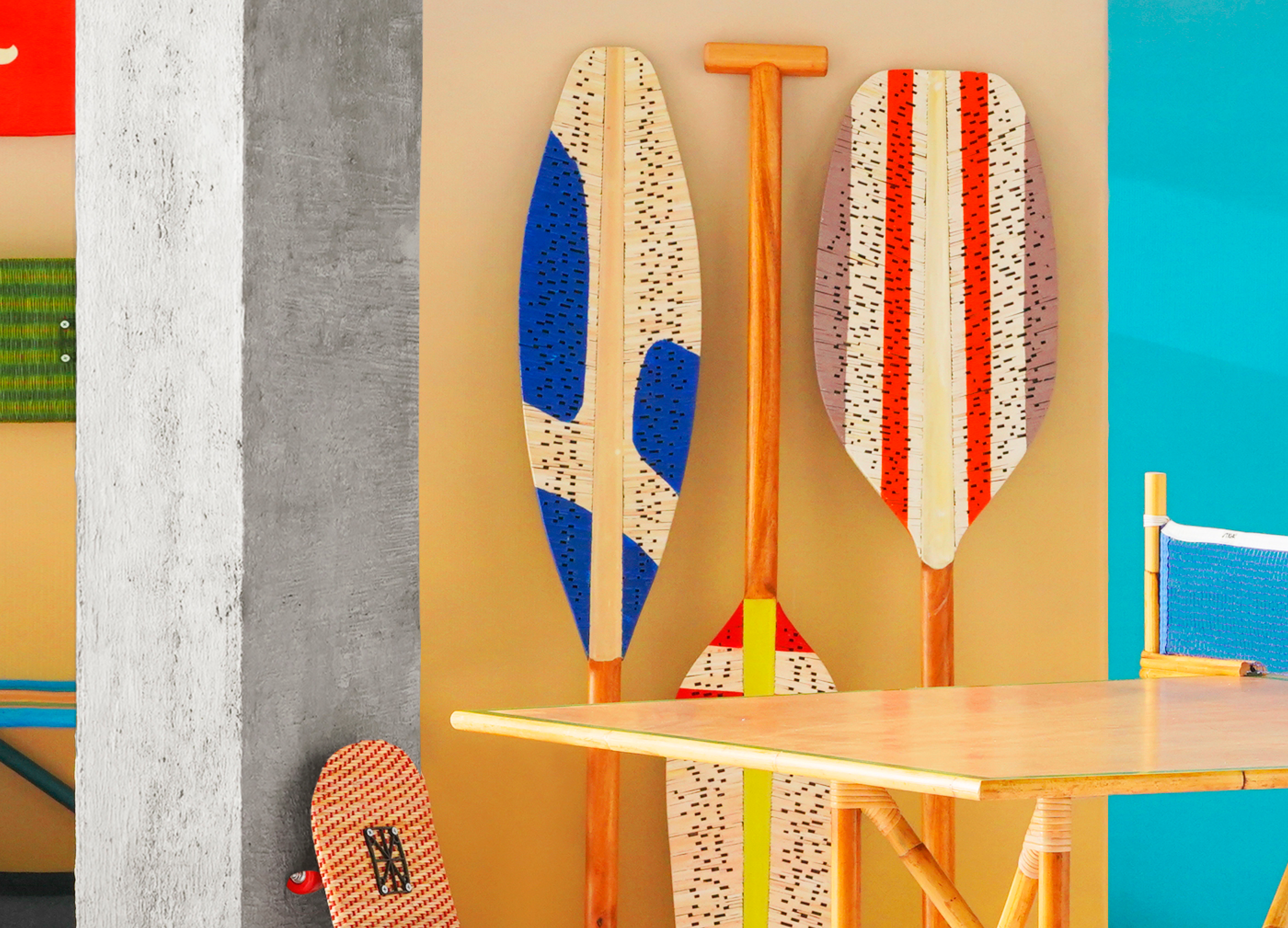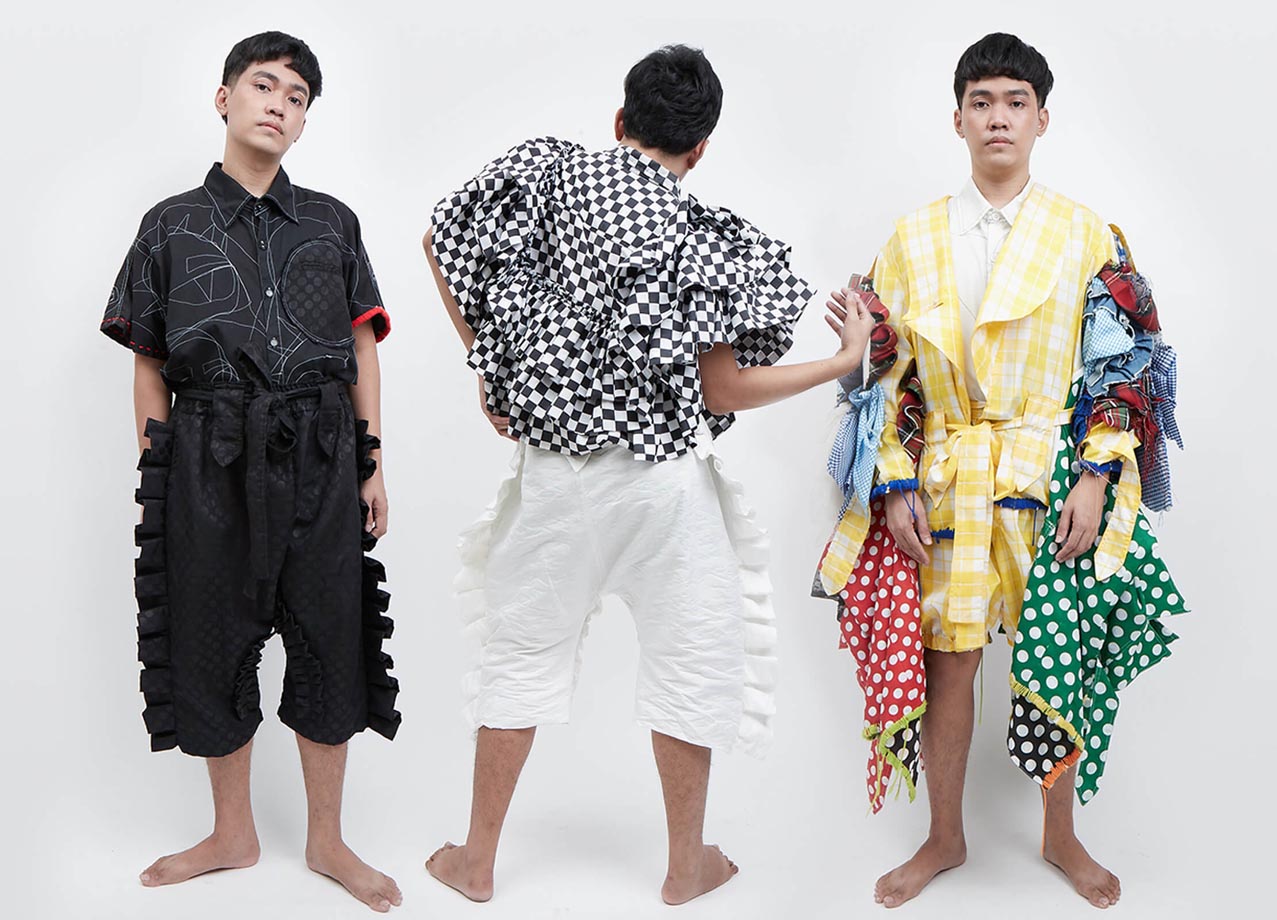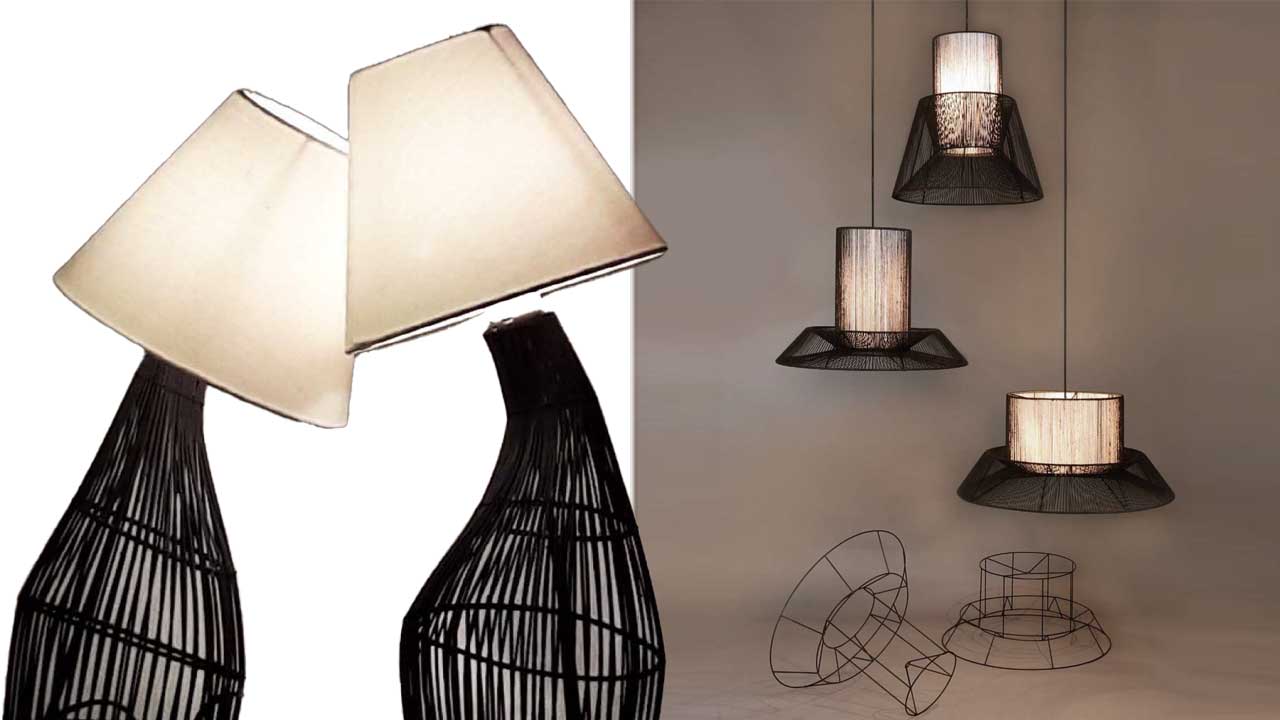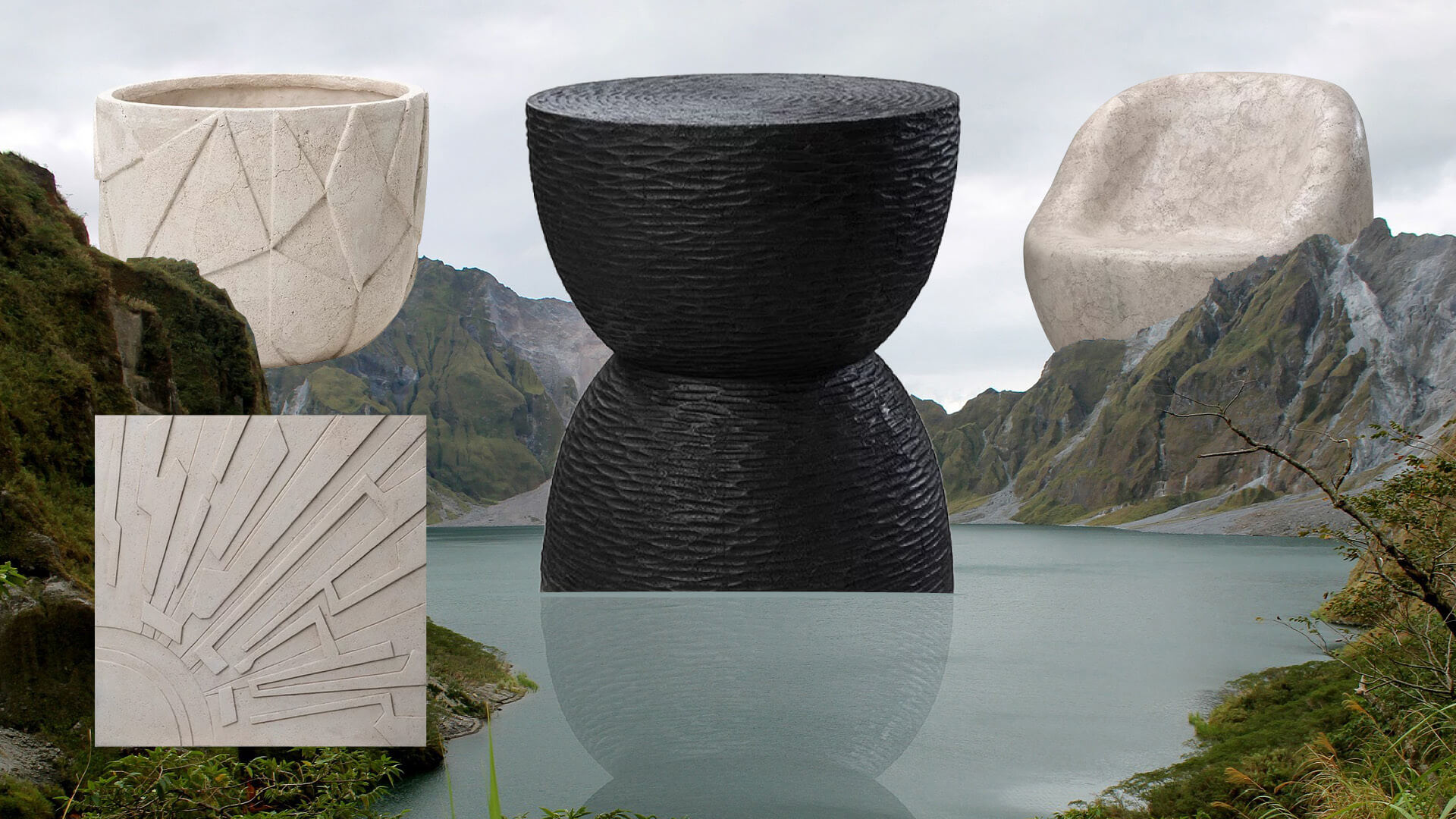
Just Like a Phoenix, This Company Rises from Ashes
Southeast Metro Arts shares it story on embracing perseverance and creating fine décor from a natural calamity
By Cielo Anne Calzado
When Mount Pinatubo erupted in 1991, many lives and livelihoods were upended. With towns still covered in ashfall and other volcanic debris three years after the eruption, the question of whether the community would be able to rise above it hung in the air. Around the same time, Shiela Dy, the founder of Southeast Metro Arts, Inc., (SEMA) had an epiphany while traversing the rough roads of Sacobia River.
Seeing the volcanic ash that blanketed roads and homes, Shiela had a feeling that it can be used to create something—and fast forward to the present, that something now pertains to unique furniture, décor, and wall accents made from Mount Pinatubo’s ashfall.
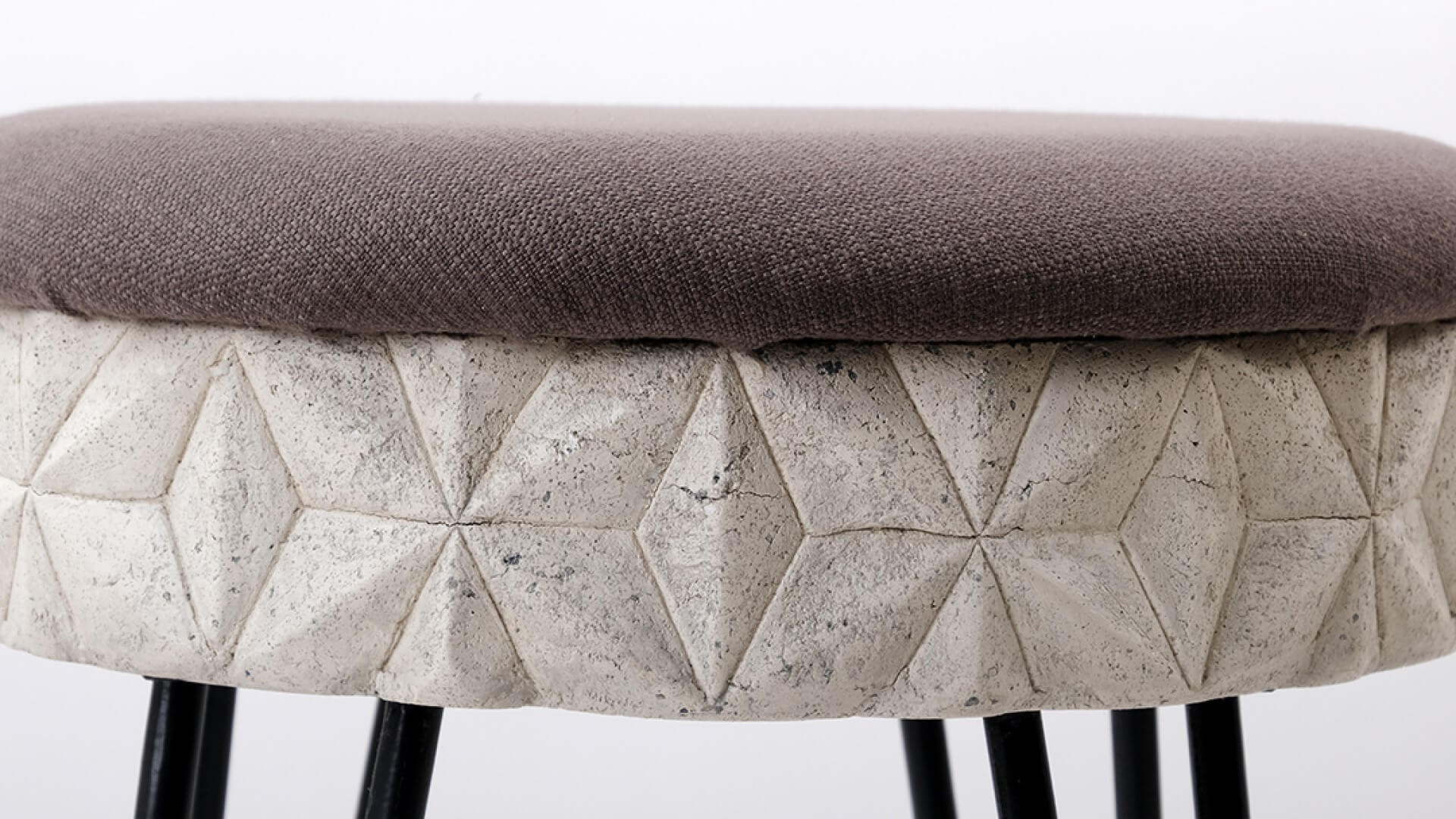
Detail of Southeast Metro Arts’ Zen Bar Stool made out of reconstituted volcanic ash—which gives the seat a natural stone-like texture—on a wrought iron base.
The gamble that paid off
After that jolt of enlightenment while passing through the Sacobia River, Dy closed her fashion accessory business and replaced it with a trailblazing concept—using reconstituted lahar (volcanic ash) in creating decorative pieces. With no rules nor models to follow, it was a risk that’s both exciting and terrifying. “There were many moments filled with apprehension and anxiousness because the concept had yet to be properly fleshed out. There’s a vague chance of success and a high possibility of complete failure,” shares COO Douglas Dy.
If there’s one thing natural disasters has thought us, it’s resilience—and this is what the Tarlac-based SEMA exemplified over the tears. From figuring out how to bring out the physical forms of the products from drawings, to understanding how the material works, the company went through stages of experimentation. The constant trial-and-error process allowed them to figure out the right portions for binders, stone, and ash.
Armed with determination and belief in their products, SEMA traveled to Manila to participate in Manila FAME, a journey that’s always worth looking backing on. At the time, they only had a simple booth filled with initial pieces like napkin holders, votive candle holders, and other miscellaneous home décor. Though inquiries were few, the team decided to soldier on and after four years, SEMA finally caught a big break. “We struck an account with La Redoute, a big French catalogue company that gave us a trial order. The rest, as they say, is history,” relates Douglas.
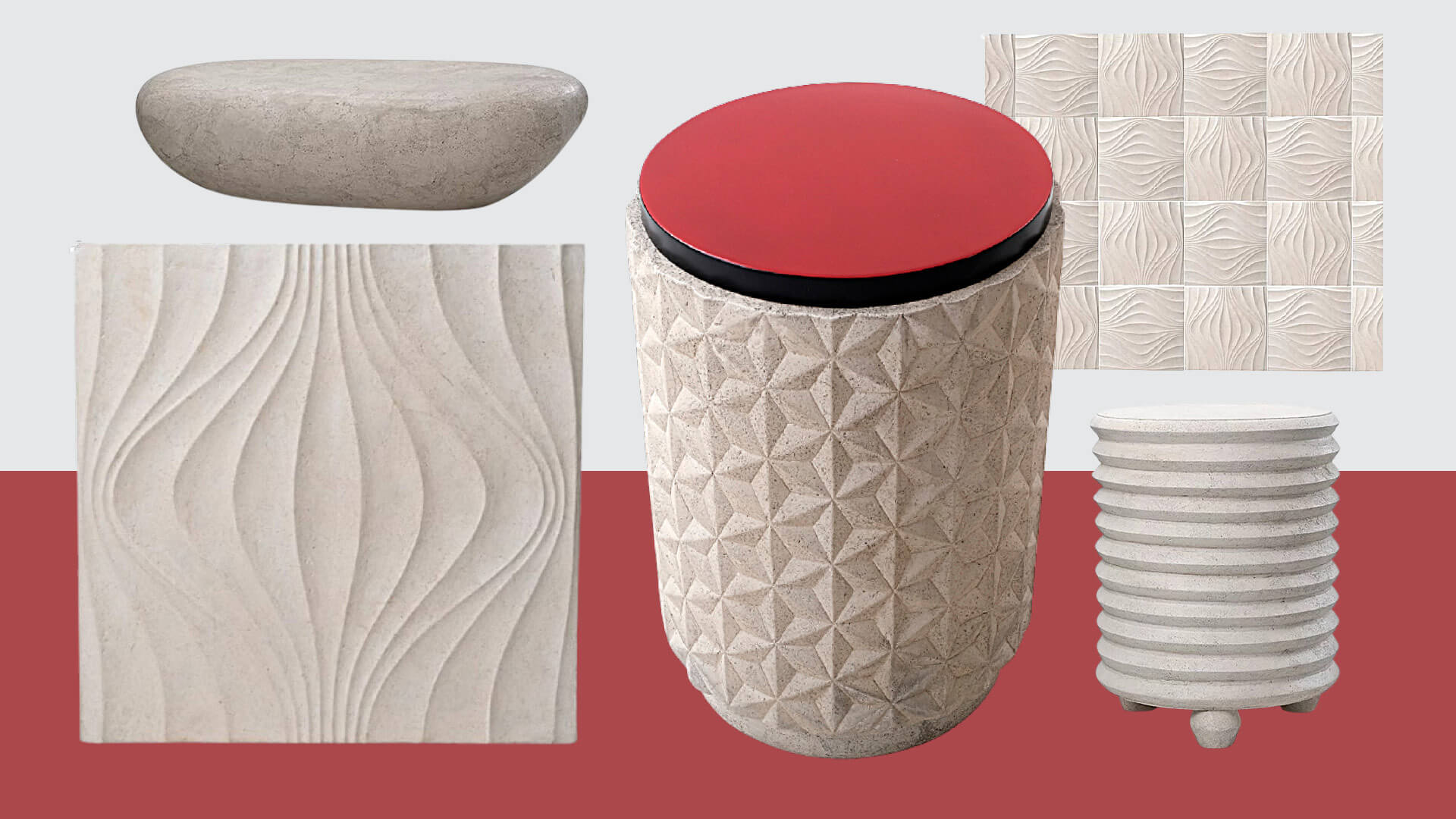
(Clockwise from bottom left): Wave Wall Art; River Stone Bench from the MYTHOS Collection; Geometric Star Stool; Wave Wall Art (multi-panel); Accordion Stool; all from Southeast Metro Arts.
A continuous evolution
From creating small pieces of homeware, SEMA progressed into producing furniture and other bigger items for the home. “During the past decades, we had many mixed medium production runs with ironwork and locally sourced materials such as abaca, jute rope, capiz, and bark, to name a few,” adds Douglas. Though the demand of the export market determines the evolution of the pieces, most of the designs take inspiration from nature while the shapes are new perspectives on traditional design themes. “We’ve been playing with object scaling which results in interesting designs. Large objects are made small and vice versa,” adds Douglas.
With its pieces traveling all over the world and finding a place in homes in the United States, Europe, and the Middle East, SEMA understands the importance of harnessing the brand’s competence and creating pieces with value. “Nature has its own design; you need not change anything—it’s perfect. You just have to understand and use it as an inspiration from its natural form, symmetry, and color,” the COO explains.
This is evident in SEMA’s recent collection, MYTHOS, which explores the beauty of minimalist organic shapes, bare forms, and the flow of water. The River Stone Bench, with a volume that’s just right for sitting comfortably, is reminiscent of skipping stones we’re familiar with. The same modern minimalism is seen in the Organic Lounge Chair, which is ergonomically designed with enough breadth and space.
Rising above current challenges
It’s no secret that many businesses have been affected by the ongoing health crisis. To make the most of the time, SEMA chose not to release a new collection as efforts are put into rethinking and refocusing their goals to adapt to the New Normal. Instead of developing new products, the brand is intent on emphasizing designs that work for them.
“The artisans are thankful for the sense of stability of having continuous work despite the pandemic,” says Douglas. To keep the business running, delivery dates have been extended and quantities have been strategically spread out across the year. The supply chain for raw materials is also planned to make sure that unexpected quarantine announcements will not affect the production.
Recalibrating the production line to match the times isn’t the only challenge SEMA is trying to overcome. With fairs and events canceled, promoting the products proved to be a hurdle, especially since the Pinatubo stone texture is best marketed and appreciated though tactile sensation. To address this, SEMA is working on finding ways to spread the word on how special the products are through digital means. “For the export market, we work closely with traditional Philippine buying agents for US stores and importers to sell our products. For local buyers, word of mouth is still worth its weight in gold, since the pieces are one-of-a-kind,” Douglas shares.
Armed with a clear vision of what they want to achieve and a unique material on their hands, SEMA aims to overcome these uncertain times—and pull through once again, like a phoenix rising from the ashes.
Words by Cielo Calzado. In main image above (left to right): Art Deco Sunray Wall Art, Geometric Bowl, Djembe Stool, and Organic Lounge Chair from the MYTHOS Collection, all by Southeast Metro Arts.


